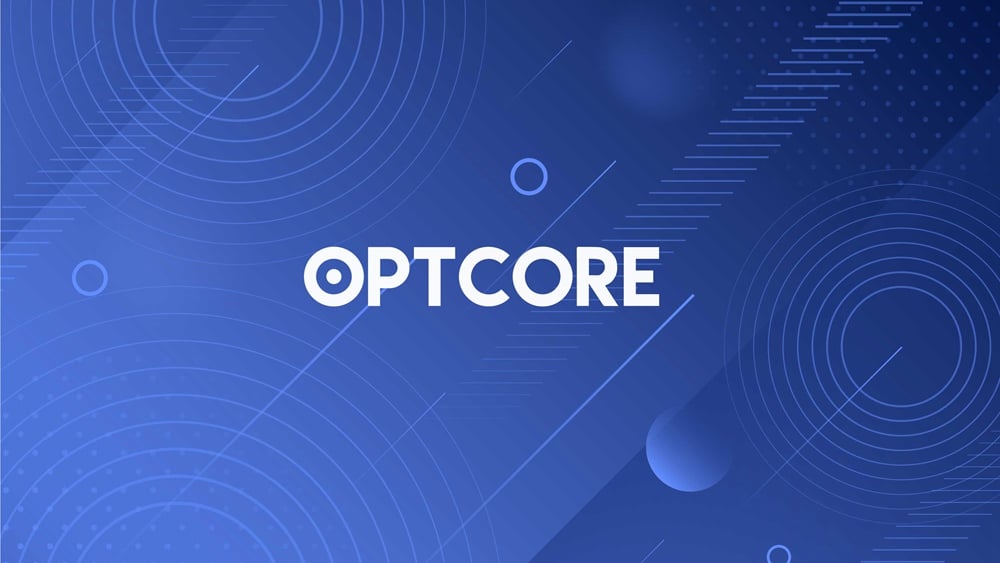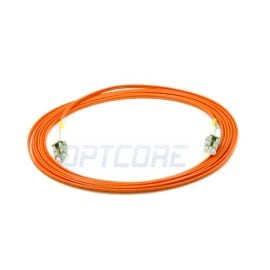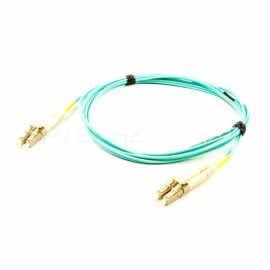Blog, Optical Networking
Fiber Insertion Loss and Return Loss: A Complete Guide
In the test report for a fiber cable, you may often see some data related to fiber insertion loss (IL) and return loss (RL), but do you know what insertion loss and return loss actually mean? How do the values of IL and RL impact the quality of the fiber cable? Are higher values better, or lower ones? What standards does the optical communication industry specify for fiber IL and RL? This blog post will provide the answers.
Table of contents
What is insertion loss?
Insertion loss is usually shortened to IL, and the unit of measurement for insertion loss is dBm. Insertion loss is the signal power loss caused by inserting devices (such as fiber connectors, fiber jumpers, couplers, etc.) in transmission systems. It is the power attenuation of the signal after passing through the device.
For example, if you directly test the power of an optical module with an optical power meter, you will get the optical power of the optical module. Then add a fiber jumper and connect it to the optical power meter for testing. You will get a new value, and the difference between the two values is the insertion loss of the fiber cable.
This attenuation is inevitable, so the smaller the attenuation value, the longer the transmission distance of the same optical power. The better the quality of this fiber patch cable.
What is return loss?
Return loss is also known as reflection loss. It indicates the amount of signal reflected back to the transmitting end. Return loss refers to the power loss caused by the reflection of part of the signal back to the signal source during transmission due to the discontinuity of the transmission link. This discontinuity may be mismatched with the terminal load or with the device inserted in the line.
We usually think return loss is the loss caused by the echo. In fact, it refers to the loss of the echo itself. That is, the greater the loss of the echo, the smaller the echo. It represents the ratio of the reflected wave power to the incident wave power at the transmission line port. The unit of measurement for insertion loss is also dB.
The higher the value of the return loss, the smaller the reflection amount, and the better the signal integrity. So, the higher the RL value, the better the performance of the fiber connector of the fiber jumper.
Fiber Cable Insertion Loss and Return Loss Standards
Insertion loss and return loss are very important factors of fiber cables. Whether in the manufacturing process or the use process, the insertion loss and return loss tests are very important. For fiber jumper suppliers, the insertion loss and return loss of the fiber cables they provide should meet the corresponding standards.
The max insertion loss of a fiber patch cable is 0.75 dB (the maximum acceptable value) in the TIA standard. For most fiber jumpers, the range of insertion loss is between 0.3 dB and 0.5 dB, and some low insertion loss ranges from 0.15 dB to 0.2 dB.
The insertion loss of MPO cables will be bigger than that of a common fiber jumper, and it is normally in the range of 0.3 dB to 0.7 dB. The insertion loss of the elite MPO cable is usually lower than 0.3 dB.
The typical specification range of return loss of a fiber connector is -15 dB to -60 dB. According to the standards for the optical communications industry, the return loss of a PC fiber end face connector should be greater than 50 dB, and the return loss of APC polishing is usually greater than 60 dB. The PC type should be greater than 40 dB. For a multimode fiber jumper, the typical return loss (RL) value is between 20 dB and 40 dB.
| Fiber Connector type | LC, SC, ST, FC, E2000 | ||
| Fiber Mode | SM(OS1,OS2) | MM(OM1,OM2,OM3,OM4,OM5) | |
| Fiber Mode | UPC | APC | MM(OM3, OM4, OM5) |
| Return Loss (RL dB) | ≤0.2 | ≤0.3 | ≤0.3 |
| Return Loss(RL dB) | ≥50 | ≥60 | ≥30 |
| Fiber Connector type | MPO,MTP | ||
| Fiber Mode | OS2 | MM(OM3,OM4,OM5) | |
| Insertion Loss (IL dB) | ≤0.70(0.45Typ) | ≤0.60(0.35Typ) | |
| Standard Insertion Loss (IL dB) | ≤0.35(0.15Typ) | ≤0.35(0.15Typ) | |
| Elite Insertion Loss (IL dB) | ≥60 | ≥30 | |
Figure 1: Optcore fiber patch cable Standard
Which factors make poor IL and RL for the fiber cable?
The end-face defects, that is, scratches, cracks, pollution, etc., on the end face, will lead to higher insertion loss and return loss.
The docking accuracy of the two end faces is very important. When the fiber core is misaligned, the alignment will deviate when the connector ferrule is connected, and the insertion loss and return loss of the fiber jumper will be greatly affected.
The types of fiber end faces include PC, UPC, and beveled physical contact (APC). Among them, the UPC connector has the lowest insertion loss due to the smallest end-face air gap, and the APC end-face connector has the highest return loss among the three.
Fiber can be bent, but bending too much will cause a significant increase in optical loss and may also directly lead to damage. Therefore, in the case of needing to coil the fiber, it is recommended to keep the radius as large as possible. It is better not to exceed 10 times the jacket diameter. Therefore, for a patch cord with a 2mm jacket, the maximum bend radius is 20mm.
-
LC-LC 9/125 OS2 Singlemode LSZH Duplex Fiber Patch Cable
Price range: US$ 2.40 through US$ 27.50 (Excl. VAT) -
LC/APC-LC/APC 9/125 OS2 Singlemode LSZH Duplex Fiber Patch Cable
Price range: US$ 2.80 through US$ 27.50 (Excl. VAT) -
LC-LC 50/125 OM2 Multimode PVC (OFNR) Duplex Fiber Patch Cable
Price range: US$ 2.90 through US$ 11.60 (Excl. VAT) -
LC-LC 10G OM3 Multimode Duplex LSZH Fiber Optic Patch Cable
Price range: US$ 2.80 through US$ 40.70 (Excl. VAT)
Methods for Optimizing Insertion Loss and Return Loss of Fiber Cable
1. Clean the fiber end face
Keep all fiber optic patch cords and fiber optic connectors clean, especially after installation and testing. If the end face is found to be dirty, use a fiber optic cleaning pen or fiber optic cleaning box to clean the end face of the fiber optic patch cord to reduce insertion loss and optical attenuation. Be careful to prevent secondary contamination during operation.
2. Standardize the installation and use of fiber cable
When using fiber patch cords, avoid applying any undue pressure to the fiber jumper connectors, do not bend the fiber beyond its maximum bending radius, and minimize bending, coiling, splicing, and coupling of fiber optic patch cords. Otherwise, when passing through the fiber optic cladding, the optical signal may be refracted. This may greatly attenuate the optical power and affect the transmission of the optical signal.
If you need to coil the fiber, you should maintain a larger coil radius. Generally, the dynamic bending radius is ≥ 20 times the outer diameter of the fiber cable, and the static bending radius is ≥ 10 times to prevent microbending losses.
In addition, try to minimize the number of plugging and unplugging of fiber patch cable. Frequent plugging and unplugging may cause the connector to loosen or the end face to wear, resulting in a decrease in the quality of network data transmission.
In addition, try to use finished fiber patch cables that have been made in the factory instead of splicing the patch cords yourself. These connectors are carried out under strict control, and the manufacturer has strict insertion and return loss test standards and more sophisticated test equipment.
3. Instant replacement
If the network connection still has problems and the attenuation is large after using the correct method and cleaning the fiber end face, use a fiber microscope to check whether there are scratches or cracks on the end face of the fiber jumper, and replace the damaged jumper in time; otherwise, the communication quality of the entire network will be greatly reduced.
Conclusion
There are many fiber jumpers on the market that are incredibly cheap. When choosing to buy fiber jumpers, please reasonably consider the quality and cost. Using cheap and low-quality fiber patch cables may cause greater cost losses in the future. Optcore provides single-mode, multi-mode, and MPO fiber optic patch cords at reasonable prices. They are strictly tested according to the insertion loss test standard, and the fiber optic patch cords are strictly cleaned before leaving the factory.
References:











